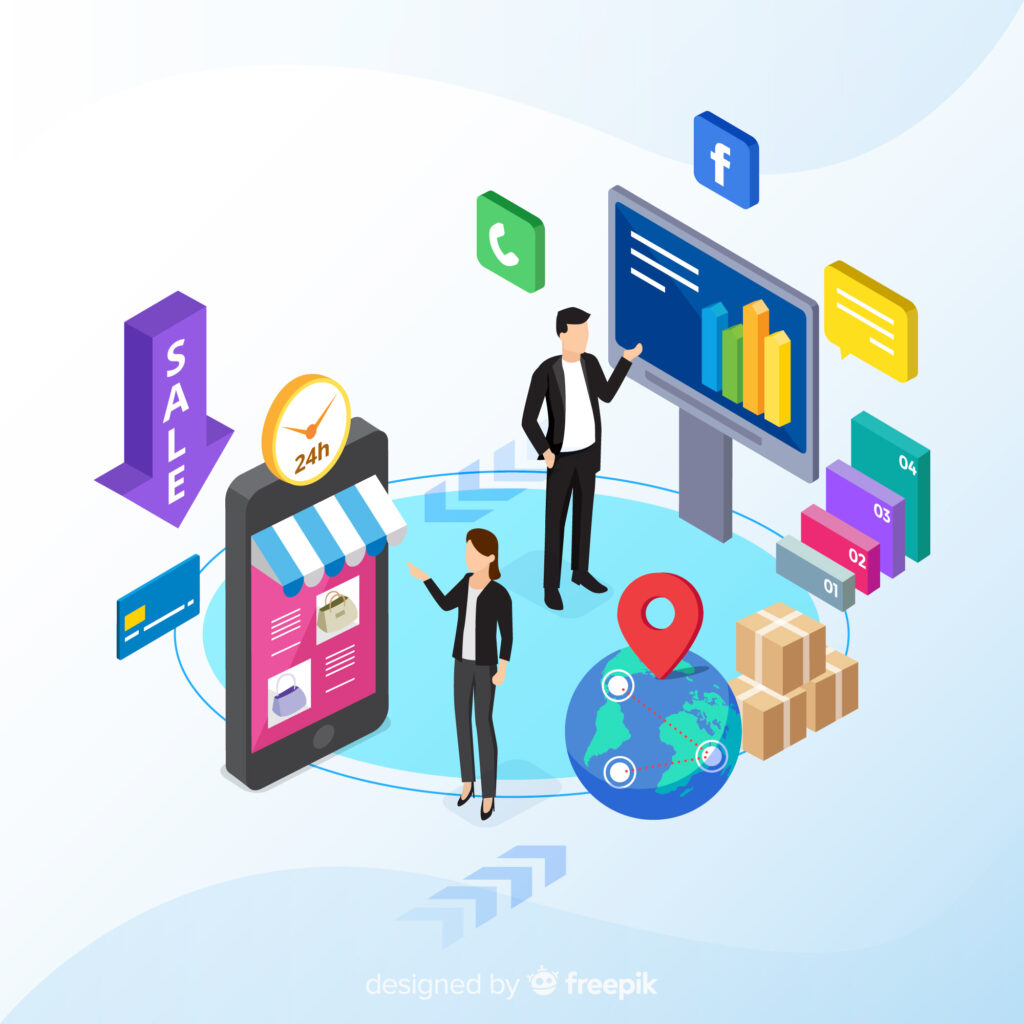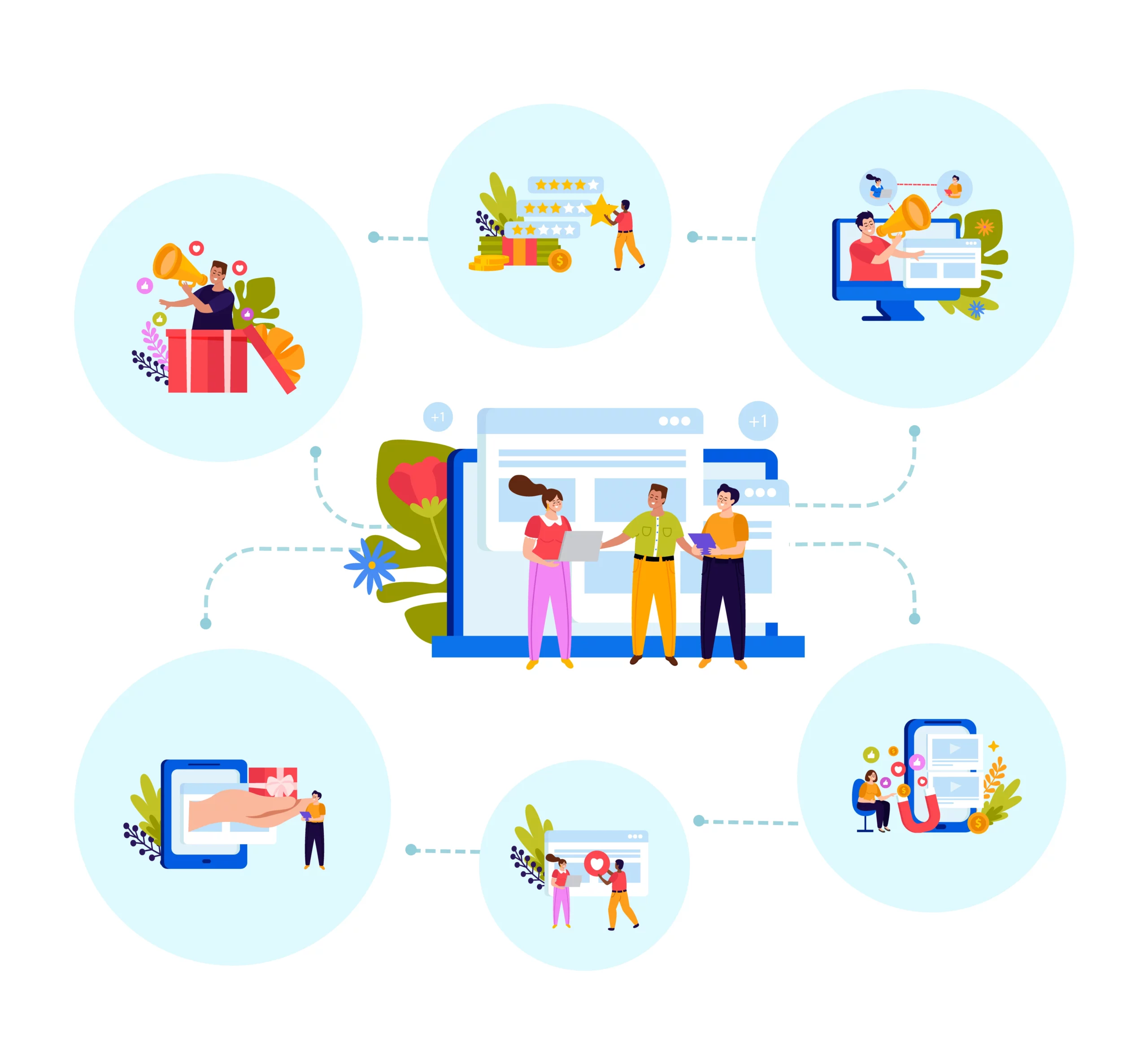Ever feel like you’re everywhere but still not reaching your customers the way you want to?
You’re on social media, running ads, sending emails, maybe even selling on multiple marketplaces—but something’s missing. That’s where choosing the right marketing strategy comes in.
The big question: Should you go multichannel or omnichannel?
Both help you connect with customers but in very different ways. Multichannel marketing is all about being present on multiple platforms—social media, email, your website, even brick-and-mortar stores—but each channel works independently. Omnichannel marketing, on the other hand, connects all those touchpoints to create a seamless, personalized experience for your customers.
So, which strategy will actually work best for your business?
In this guide, I’ll break it all down— Omnichannel vs Multichannel: what each one means, how they compare, and which one you should use to grow faster and sell smarter.
What Is Multichannel Marketing?
Multichannel marketing is when you connect with customers across different platforms—your website, social media, marketplaces, and retail stores. Each channel works separately, so what happens on one platform doesn’t automatically reflect on the others.

For example, if you sell on your website, list products on Amazon, and run email promotions, these channels don’t share real-time data. That means a customer might receive an email about a product they already bought elsewhere.
How Does Multichannel Marketing Work?
With this approach, you engage customers on various platforms, but each one operates independently. You might sell products on your website and Amazon while running separate ad campaigns on social media.
Since these channels don’t sync, customers might see different offers or messaging depending on where they interact with your brand. This setup gives you flexibility but requires more effort to keep everything aligned.
Advantages and Disadvantages of Multichannel Marketing
While multichannel marketing expands your reach, it also means managing each platform separately. Here’s what you need to consider:
Advantages of Multichannel Marketing
- Reach more customers. Being present on multiple platforms helps you connect with buyers wherever they prefer to shop.
- More flexibility. You can customize your marketing strategies for each platform without affecting the others.
- More sales opportunities. Giving customers different ways to buy increases the chances of conversions.
Disadvantages of Multichannel Marketing
- Inconsistent experience. Customers might see different prices, promotions, or messaging on different channels.
- More effort to manage. Each platform requires separate updates, tracking, and customer interactions.
- Weaker brand connection. Since channels don’t integrate, customers may not get a unified brand experience.
What Is Omnichannel Marketing?
Unlike multichannel marketing, where platforms work separately, omnichannel marketing connects everything. Your website, social media, email, and even in-store interactions all share data, creating a smooth and consistent experience for customers.

This means if someone checks out a product on your website, they won’t have to start over when they open your app or visit your store. Every touchpoint is linked, making it easier for customers to interact with your brand.
How Does Omnichannel Marketing Work?
In an omnichannel setup, every action a customer takes carries over to other platforms. If someone adds a product to their cart on your website but doesn’t buy it, they might get an email reminding them about it. If they open the email, click the link, and return to your site, their cart is still there, ready to complete the purchase.
Since all platforms communicate with each other, customers don’t have to repeat steps, and their experience feels more connected. This approach makes interactions more personalized, helping you engage customers at the right time with relevant messaging.
Advantages and Disadvantages of Omnichannel Marketing
Omnichannel marketing helps create a better customer experience, but it also requires more effort to set up and manage. Here’s what you need to consider:
Advantages of Omnichannel Marketing
- Consistent experience. No matter where customers interact with your brand, they get the same messaging, offers, and service.
- Better engagement. Since channels are connected, you can reach customers with personalized recommendations based on their activity.
- More customer loyalty. A smoother shopping journey makes customers more likely to return.
Disadvantages of Omnichannel Marketing
- More complex setup. You need tools that can sync data across all platforms.
- Higher investment. Managing a connected system takes time, money, and technical expertise.
- Requires a strong strategy. If platforms aren’t fully integrated, gaps in the experience can frustrate customers.
Omnichannel vs Multichannel: Key Differences
Now that you know how both strategies work, it’s time to break down the differences. While both involve multiple platforms, the way they connect and function sets them apart.
Here’s a clear comparison:
| Feature | Multichannel Marketing | Omnichannel Marketing |
|---|---|---|
| Channel Integration | Channels work separately. No shared data. | Channels are connected. Data is shared across platforms. |
| Customer Experience | Inconsistent. Customers may have to restart actions on different channels. | Smooth and connected. Customers can continue where they left off. |
| Personalization | Basic. Messaging is often the same across platforms. | Advanced. Messages adapt based on customer behavior. |
| Engagement | Limited. Customers interact with different channels independently. | Higher. Customers stay engaged as their journey flows naturally. |
| Technology Requirement | Lower. Can be managed with separate tools. | Higher. Needs a system that connects all platforms. |
| Best for | Businesses focusing on reaching more customers through multiple platforms. | Businesses prioritizing a smooth customer journey and retention. |
Multichannel marketing helps you reach a broader audience, while omnichannel marketing creates a better experience by connecting every interaction. The right choice depends on your goals and how much integration you’re ready to handle.
Omnichannel vs Multichannel: Which One Should You Choose?
Now that you know the differences, the next step is figuring out which strategy fits your business. The choice depends on how you sell, your customer journey, and the resources you have for managing multiple channels.
When Should You Choose Multichannel Marketing?
Multichannel marketing works best when you want to expand your reach without complex integrations.
You should consider it if:
- You sell on multiple platforms but don’t need them to connect. For example, if you run an online store and also sell on Amazon, Etsy, and social media, but each channel operates independently, multichannel marketing keeps things simple.
- Your priority is volume, not personalized experiences. If your main focus is getting as many sales as possible, rather than tracking individual customer journeys, a multichannel approach helps you reach more buyers without requiring deep data integration.
- You don’t have the resources to integrate multiple platforms. Small businesses or startups that want to quickly sell across various marketplaces, ads, and email campaigns without investing in backend integrations can benefit from a multichannel setup.
This strategy is practical when you need flexibility and speed rather than a deeply connected customer experience.
When Should You Choose Omnichannel Marketing?
Omnichannel marketing is the right choice when customer experience and retention are your main goals.
It works best if:
- You want customers to move smoothly between channels. For instance, a shopper adds an item to their cart on your website, gets a reminder via email, and later buys it from your mobile app without re-entering details. This level of integration keeps customers engaged.
- Personalization is a key part of your marketing strategy. If your business relies on tailored product recommendations, behavior-based email triggers, or dynamic ad retargeting, an omnichannel system ensures that every touchpoint works together.
- You have the resources to unify data and systems. Large brands or businesses with dedicated marketing and tech teams can leverage omnichannel marketing to create a seamless experience, linking customer interactions across email, social media, website, and physical stores.
If you want to build stronger relationships with your customers and create a consistent experience across all platforms, omnichannel marketing is the better long-term investment.
Omnichannel vs Multichannel Retail: How They Impact Sales
Your choice of strategy also affects how you sell in the retail space. Whether you’re selling online, in-store, or both, the way you connect your sales channels determines the customer experience and overall revenue potential.
Multichannel Retail
If you use a multichannel approach, you sell on different platforms, but each one operates independently. Your customers can find your products in multiple places, but their experience isn’t connected across channels.
For example, if you run a clothing brand, you might sell through:
- Your website
- Amazon and eBay
- A brick-and-mortar store
Each channel has its own inventory, customer interactions, and promotions. A shopper who buys from your website won’t have their purchase history reflected in your physical store. If they abandon a cart on your website, they won’t get a reminder when they visit your store. While this setup increases visibility and sales, it doesn’t create a connected shopping experience.
Omnichannel Retail
With an omnichannel approach, your online and offline stores work together, giving customers a smooth experience no matter where they shop.
For example, if you sell electronics, your customers might:
- Browse products on your website
- Get a personalized email about a previously viewed item
- Visit your store to see it in person
- Use your mobile app to check store availability and make the purchase
Since all sales channels share customer data, the entire process feels connected. If a customer starts shopping online and finishes in-store, their details, preferences, and even loyalty rewards stay consistent. This approach helps you drive more conversions by making the buying process easier and more personalized.
By understanding how these strategies impact retail sales, you can choose the one that best fits your business goals. If you just want to expand your reach, multichannel works. If you want a unified shopping experience that builds customer loyalty, omnichannel is the way to go.
Omnichannel vs Multichannel in E-commerce
Just like in retail, the way you set up your e-commerce sales channels impacts how customers interact with your brand. Whether you manage each platform separately or connect them into a single experience makes a big difference in customer satisfaction and revenue.
Multichannel E-commerce
With a multichannel approach, you sell on multiple platforms, but each one operates on its own. Your website, online marketplaces, and social media stores all function independently.
For example, if you run a skincare brand, you might:
- Sell products on Shopify
- List items on eBay and Amazon
- Run a Facebook Shop for social media sales
Each platform has its inventory, pricing, and promotions. A customer who buys from Amazon won’t see the same loyalty discounts available on your website. If they abandon their cart on Shopify, they won’t get a follow-up reminder through Facebook. This approach helps you reach a larger audience, but it doesn’t create a unified shopping experience.
Omnichannel E-commerce
With an omnichannel approach, your e-commerce platforms work together, ensuring customers get a consistent experience no matter where they shop.
For example, if you sell fitness gear, your customers might:
- Browse products on your website
- Get retargeted with a personalized ad on Instagram
- Open your mobile app and see their recently viewed items
- Complete the purchase in one click without re-entering payment details
When your platforms are connected, your customers’ data stays the same across all of them. They’ll see the same product recommendations, saved carts, and discounts whether they’re on your website, app, or social media. This consistency helps build trust, boost sales, and bring people back to buy again.
The right strategy depends on your business needs. If your goal is to maximize reach across multiple platforms without deep integration, multichannel works. If you want to build long-term customer relationships through a connected shopping experience, omnichannel is the better choice.
Case Studies: Brands Using Omnichannel & Multichannel Marketing
Many well-known brands use either an omnichannel or a multichannel approach, depending on their goals. Some focus on expanding their reach across different sales platforms, while others prioritize a connected shopping experience.
i. Nike’s Omnichannel Success
Nike connects its online store, mobile app, and physical stores so customers can move between them without interruptions. If you browse a pair of sneakers on the website but don’t complete the purchase, the Nike app will remind you about it. If you visit a store, you can scan a product using the app to check online availability, sizes, and reviews.
![Omnichannel vs Multichannel: Which Strategy Should You Choose? [2025] 1](https://images.storychief.com/account_7122/nike-app_0ce06de65539fed3ade368500534fcac_2000.png)
Nike also offers exclusive member benefits through its app. Customers can buy online and pick up in-store, use mobile checkout to skip lines, or receive personalized product recommendations based on past purchases. This level of integration encourages repeat sales and increases customer loyalty.
ii. Apple’s Multichannel Approach
Apple sells its products through multiple channels, but each operates independently. You can buy directly from an Apple Store, order online, or purchase from third-party retailers like Best Buy and Amazon. However, these channels don’t interact with each other.
![Omnichannel vs Multichannel: Which Strategy Should You Choose? [2025] 2](https://images.storychief.com/account_7122/apples-marketing_fcb5e7fce99a4f3e37e7d77b0bc44e9b_2000.jpg)
For example, if you start shopping for a MacBook on Apple’s website but don’t complete the purchase, you won’t receive reminders when browsing at Best Buy. If you buy an iPhone from a third-party retailer, you won’t get the same financing options or trade-in deals available through Apple.
This multichannel approach helps Apple maximize its reach while keeping full control over pricing and branding.
iii. Walmart’s Omnichannel Strategy
Walmart combines its website, mobile app, and physical stores to create a connected shopping experience. You can browse products online, check in-store availability, and place an order for pickup or delivery—all from the same system.
For example, if you add groceries to your cart through the Walmart app, you can choose between home delivery or pickup at a nearby store. Once you arrive, the app notifies the store, and an associate brings the order to your car. Walmart also syncs in-store purchases with online accounts, making it easy to track past orders and reorder frequently bought items.
![Omnichannel vs Multichannel: Which Strategy Should You Choose? [2025] 3](https://images.storychief.com/account_7122/walmarts-omnichannel-strategy_cc8a702f81d8d7152d378d46030477c5_2000.png)
Nike and Walmart focus on creating a unified experience, while Apple prioritizes reach through independent sales channels. The right strategy depends on how you want customers to interact with your brand.
Which Strategy Should You Choose?
Now that you’ve seen how brands use both omnichannel and multichannel strategies, the choice comes down to what fits your business goals and setup.
If you want to offer a connected experience across your website, app, and physical store—and you have the tools and team to manage it—go with omnichannel. It works best when your focus is on customer loyalty and long-term retention.
If your goal is to reach more people on different platforms without setting up a fully connected system, multichannel is a better fit. It’s faster to implement and easier to manage if you don’t need all your platforms to work together.
Before you decide, take a step back. Look at your customer journey, your internal resources, and your overall marketing goals. That will help you pick the strategy that actually works—not just the one that sounds good.
Want to learn how to sell better on multiple platforms?
FAQs
1. How is omnichannel retail different from multichannel retail?
Omnichannel retail integrates all customer touchpoints for a smooth experience, while multichannel retail involves multiple platforms that operate separately. Understanding this difference helps businesses decide which strategy to use.
2. What are the key benefits of omnichannel marketing?
Omnichannel marketing provides a unified experience across all platforms, boosting customer satisfaction and loyalty. In contrast, multichannel marketing focuses on reaching customers through different channels without integration.
3. Can you provide some omnichannel marketing examples to illustrate the concept?
Companies like Starbucks and Nike use omnichannel marketing to connect their app, website, and physical stores for a unified shopping experience. Multichannel marketing, however, uses separate platforms for each channel.
4. Why do businesses choose multichannel marketing over omnichannel?
Multichannel marketing helps businesses expand their reach quickly across various platforms like Amazon or eBay, while omnichannel marketing requires more integration for a consistent customer experience.
5. Which strategy is better for customer loyalty: omnichannel vs multichannel marketing?
Omnichannel marketing is more likely to foster customer loyalty by offering consistent experiences across all touchpoints. In comparison, multichannel marketing can result in disconnected interactions across different platforms.
![Omnichannel vs Multichannel: Which Strategy Should You Choose? [2025]](https://rextheme.com/wp-content/uploads/2025/04/Omnichannel-vs-Multichannel_.webp)


